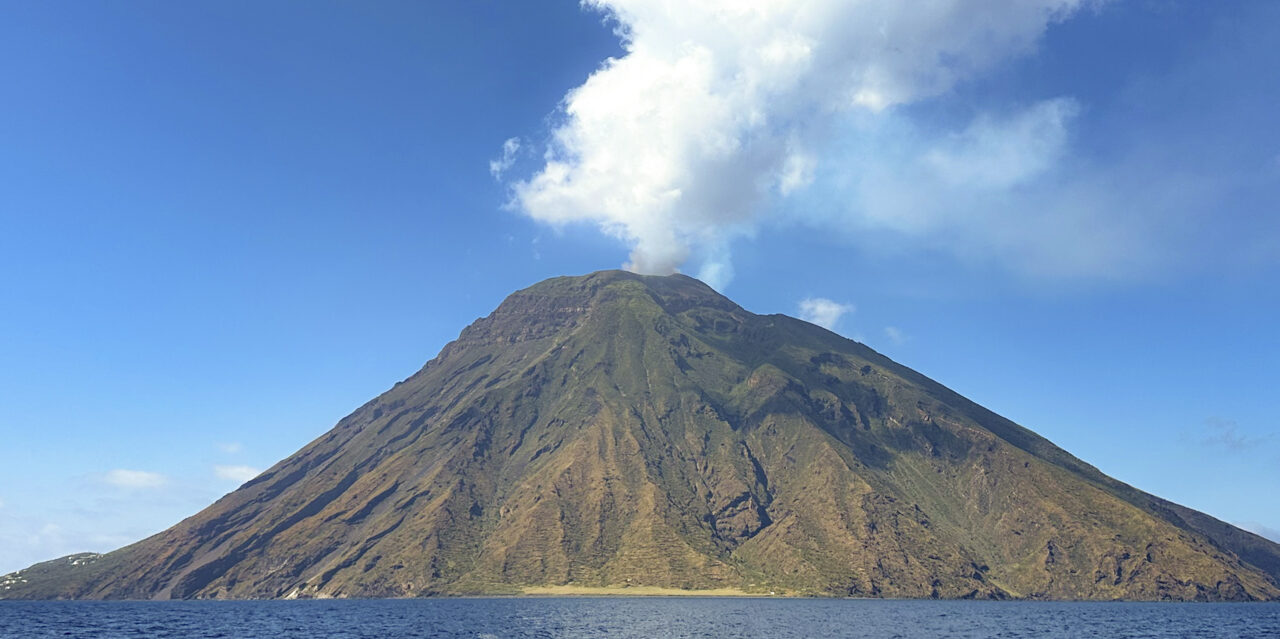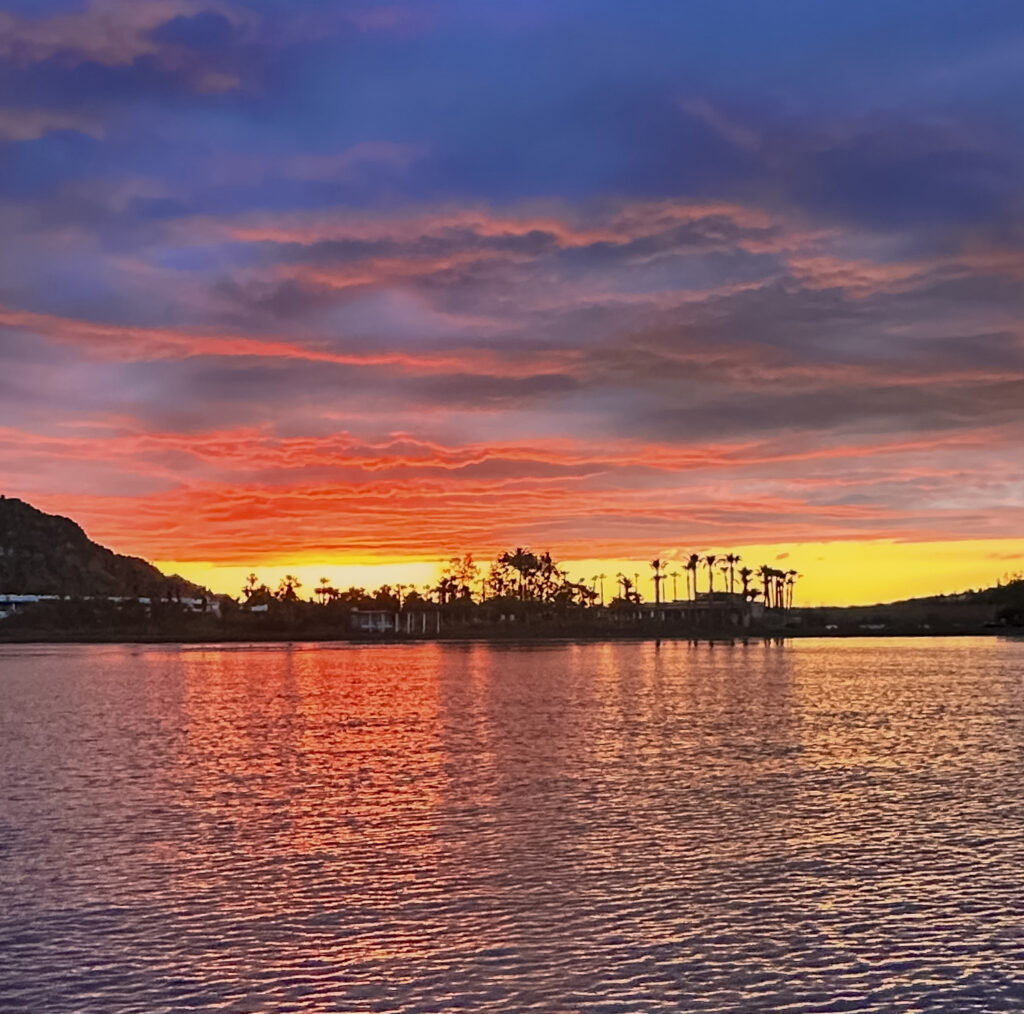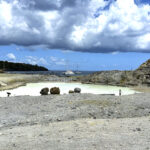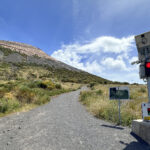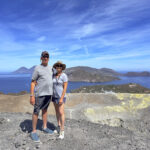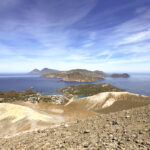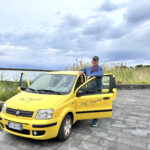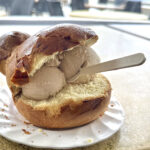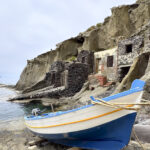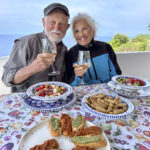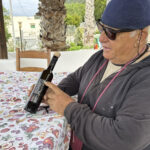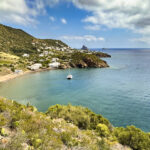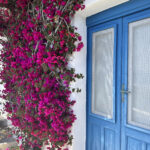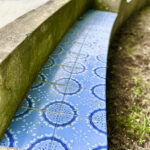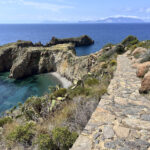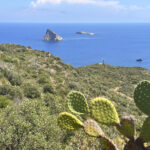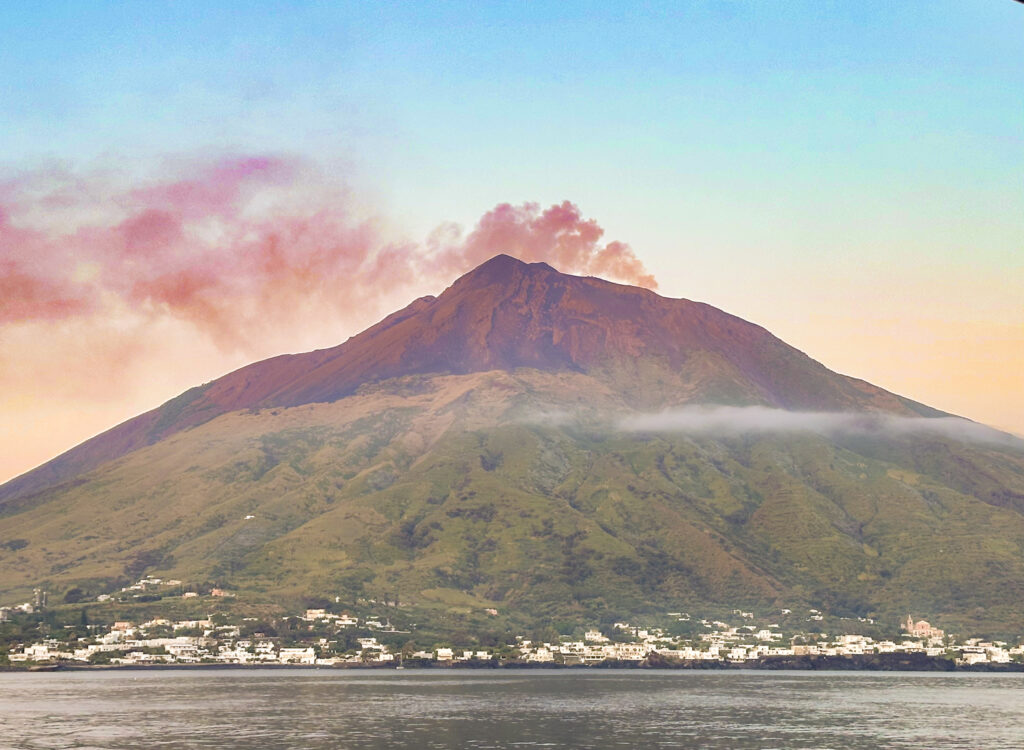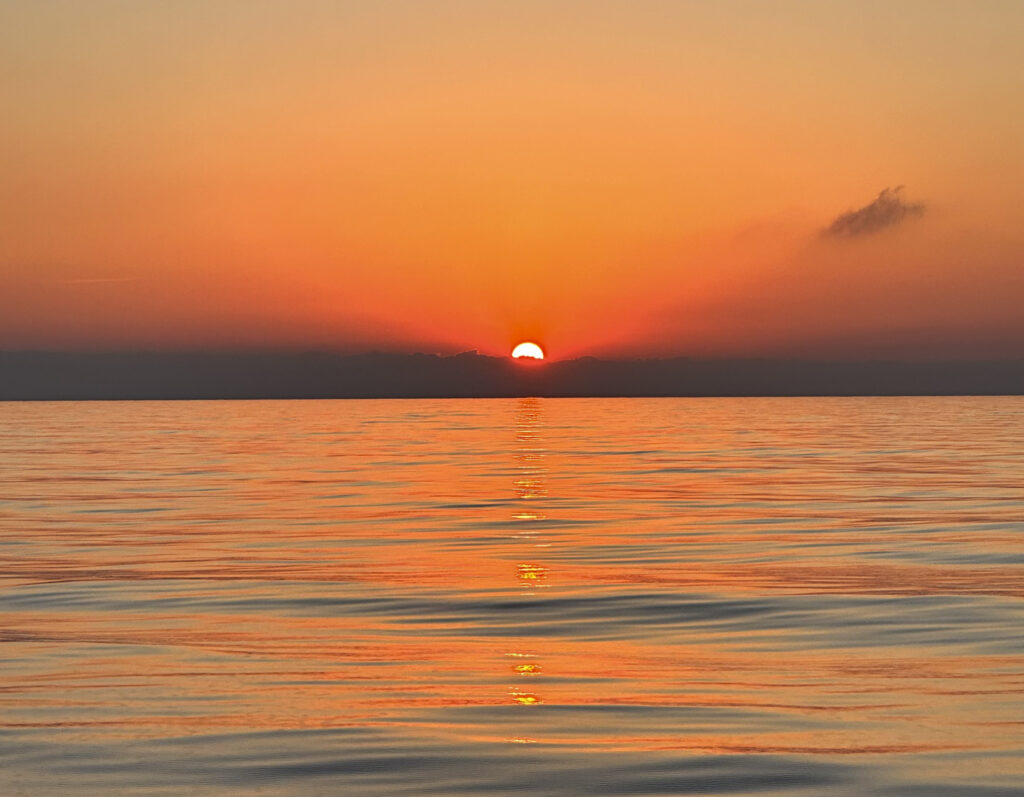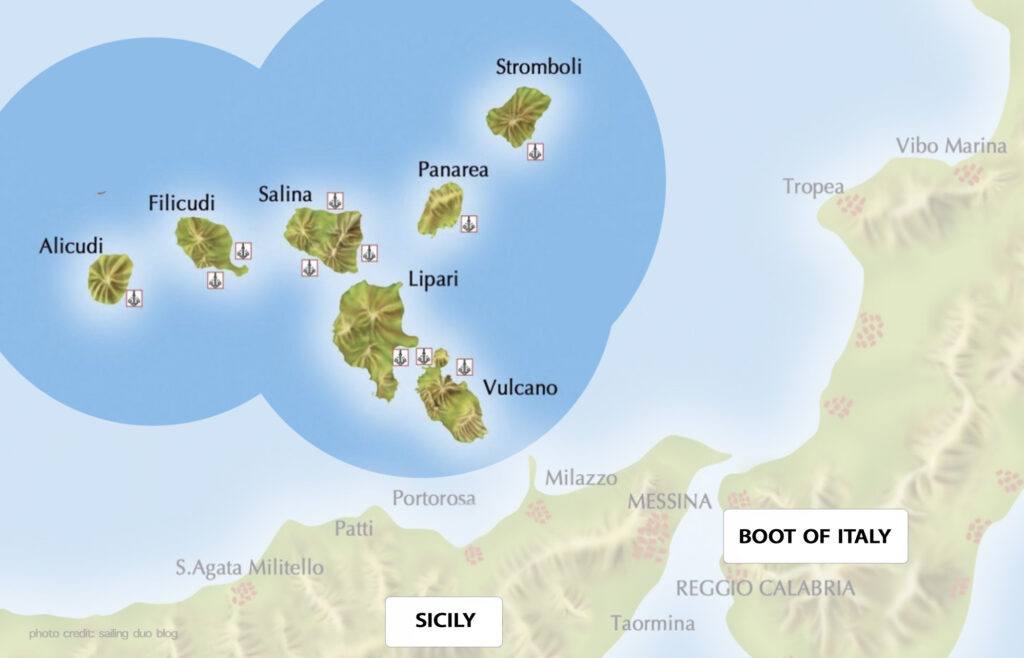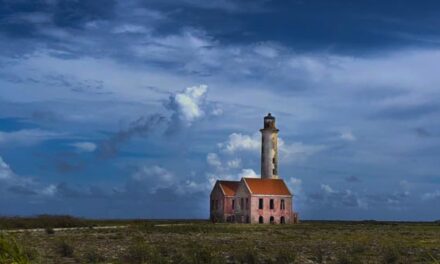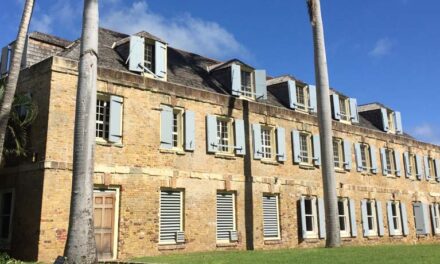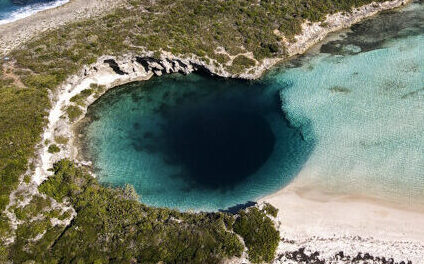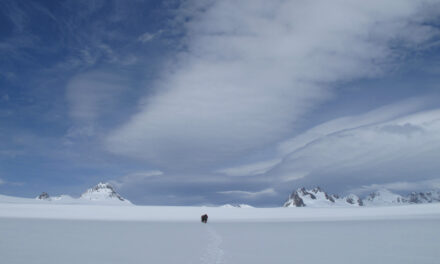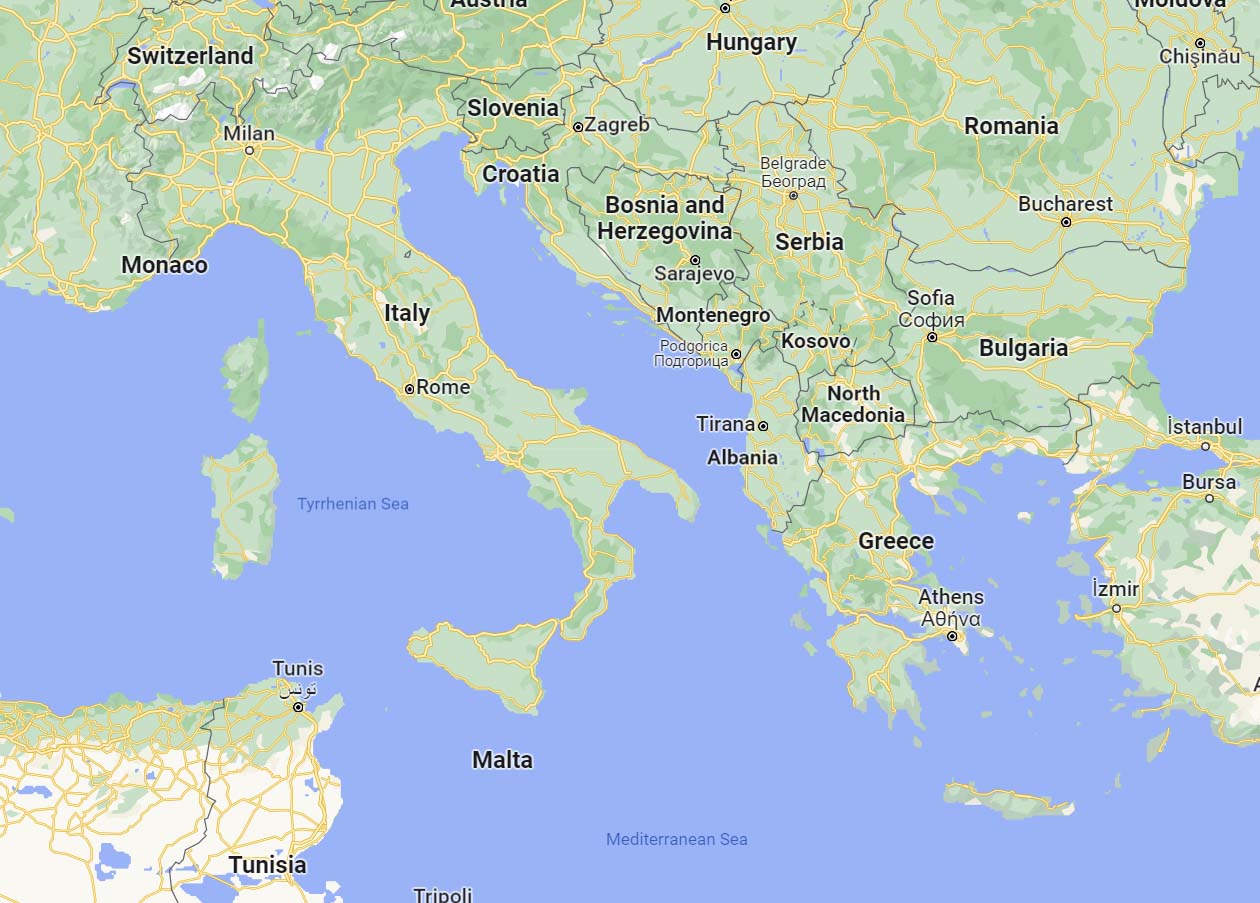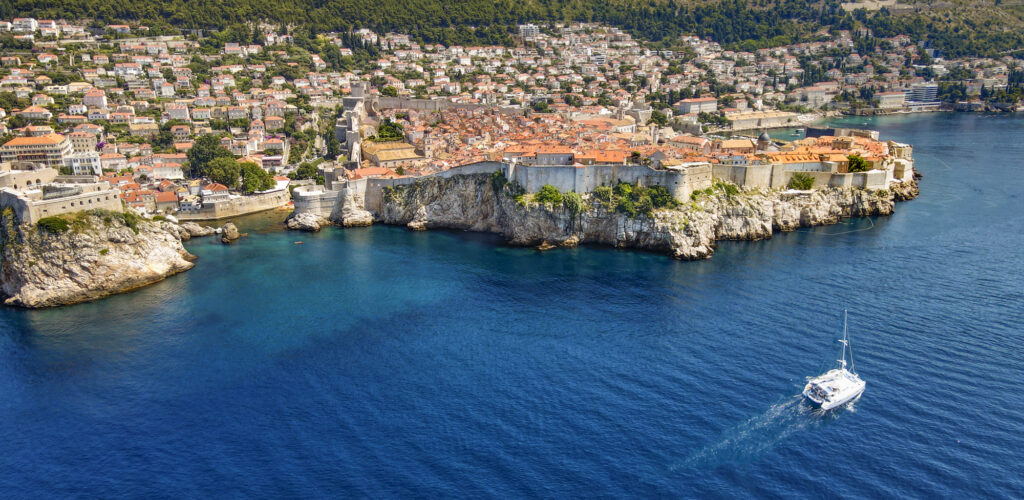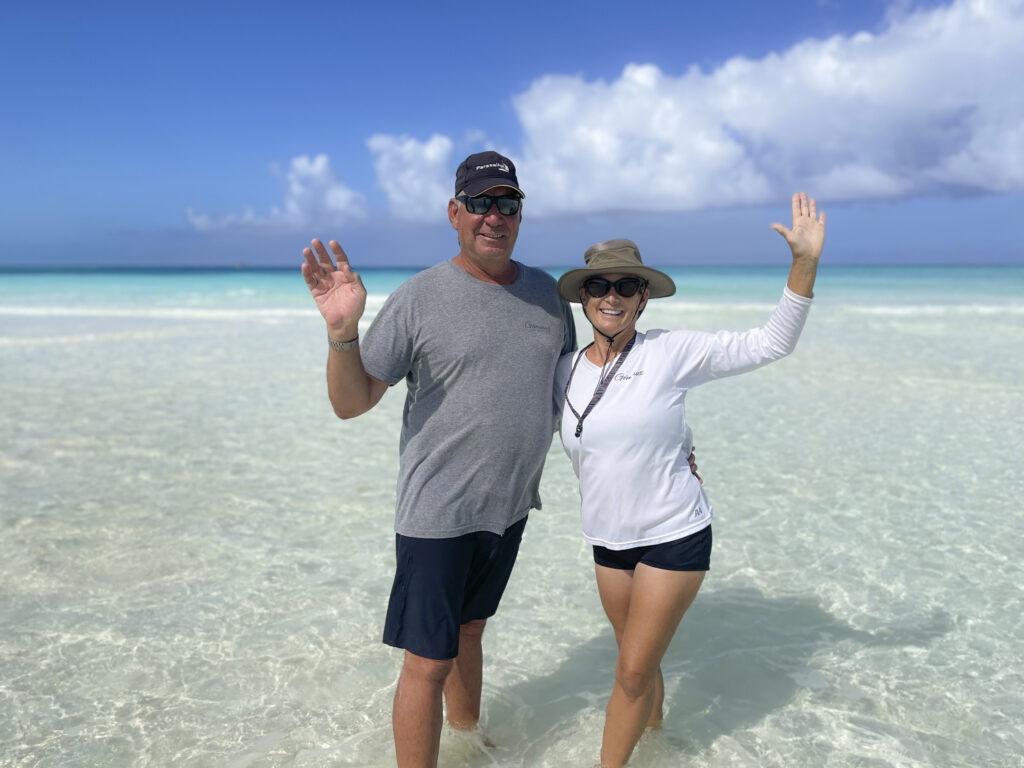As I started wrapping my head around this new geography, a puff of volcanic smoke coming from the top of Stromboli made it easier to understand the layout of this Italian archipelago. After traveling 70 miles from Sicily, we entered the harbor on the northeast side of Vulcano for protection from the incoming Mistral wind. A spectacular sunset painted the skies over a long beach where a few people were swimming—areas of bubbling water confirming that a hot spring was heating the sea. We knew when the wind shifted because a strong smell of rotten eggs from the nearby mud baths and sulphur deposits would come wafting through Gémeaux.
On this early day in May, water temperatures hovered around 69 degrees and a little boil wasn’t enough to lure me in. We chose land exercise instead and when the stop light turned green, signifying mild temperatures and this still active volcano probably wouldn’t erupt, we started the hike to the top of the caldera. The trail was mostly volcanic ash, with deep trenches dug out by rainfall, making the footing precarious in places.
I craved my covid mask during the final stretch across the sulphur springs and let out a big exhale when we reached the 1600-foot summit. Better than any map, we had a glorious panoramic view of all seven Aeolian islands in the distance and Gémeaux safely at anchor below.
The next day, we headed west for the island of Salina, but changed course when unforecasted rain and wind blew in. Winds gusted to 40k, creating choppy seas and nearly sending the bimini to Oz. Eventually, we found refuge on the remote island of Filicudi. 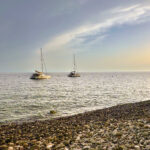 Using a lot of hand signals and limited Italian vocabulary, we finally communicated enough with the harbor master to secure ourselves on a mooring ball. After wandering up a tiny ally stairway of this little residential village of Pecorini, we found the only restaurant in town—La Scogliera. A few locals were picking up carryout and for a moment I thought we would be selecting a piece of pizza from the deli case. In fact, we had a full meal of fried calamari, spaghetti with clams, fish, cannoli, wine, and complimentary Amara, laughing with the good-natured owners and locals who came in for a drink and a smoke. I love exploring through food—you discover so much more than just what’s on your plate.😄 Seas were calm when we collapsed into bed, but the wind soon picked up and we began to roll and roll and roll. The boom squeaked, the mooring ball clanked, and my lips hurt from sunburn. The captain eventually got up sometime in the middle of the night, grabbed his tool bag, and went to work in the engine compartment to reduce the noise from our injured rudder, also a part of the concerto. My hero.
Using a lot of hand signals and limited Italian vocabulary, we finally communicated enough with the harbor master to secure ourselves on a mooring ball. After wandering up a tiny ally stairway of this little residential village of Pecorini, we found the only restaurant in town—La Scogliera. A few locals were picking up carryout and for a moment I thought we would be selecting a piece of pizza from the deli case. In fact, we had a full meal of fried calamari, spaghetti with clams, fish, cannoli, wine, and complimentary Amara, laughing with the good-natured owners and locals who came in for a drink and a smoke. I love exploring through food—you discover so much more than just what’s on your plate.😄 Seas were calm when we collapsed into bed, but the wind soon picked up and we began to roll and roll and roll. The boom squeaked, the mooring ball clanked, and my lips hurt from sunburn. The captain eventually got up sometime in the middle of the night, grabbed his tool bag, and went to work in the engine compartment to reduce the noise from our injured rudder, also a part of the concerto. My hero.

Relying on frequent injections of caffeine, we pointed east as more rain started to fall. We took in the scenic northern coast of Salina, including the impressive sea arch, Arco Naturale di Punta Perciato. Anchoring wasn’t allowed in this beautiful bay so we chose the Santa Marina marina to weather the weather…am I repeating myself? We were tickled to discover a quaint little town filled with shops, restaurants, and no crowds yet…just millions and millions of cats. We picked a restaurant as we often do, simply wandering through town, inspecting menus and ambience to determine the ultimate dining experience. Porto Bello checked all the boxes, including a view of the sea and Gémeaux below, which always makes the captain happy.
Woke the next morning to the sound of rain falling solidly on the windows. I grabbed coffee and returned to bed, thinking this would be the perfect day to spend under the covers, maybe emerging to the cockpit for an occasional game of Mexican Train with our guests. But the rain stopped and we all squeezed into a tiny rental car to take in the vistas of this verdant island. Certain I would find the natural beauty of Salina to be the highlight, food once again cinched the prize. This group of healthy eaters devoured traditional brioche rolls stuffed with gelato…for breakfast!
We nearly skipped the Fenech winery when we showed up without a reservation and gasped at the €35pp price tag for a few sips of wine and some snacks. We ended up at a table overlooking the sea and enjoying the next two hours with the owner and his son, drinking their fabulous wines and eating a complete lunch of bruschetta, pecorino cheese, and homemade Aeolian salad with potatoes, cucumbers, tomatoes, and capers that grow wild on the island. Our designated driver got us safely home.😅
Our next stop was the Aeolian capital city of Lipari on the island of Lipari. A boat errand was at the top of our list as we hoped the largest of the Aeolian Islands would have the elusive part to repair our broken watermaker. I was pleasantly surprised to find few tourists in what I expected to be the main attraction for the Aeolians. Our guests discovered a café for food and drink while the crew wandered town for hardware and grocery stores. No luck on the hardware, but we found great produce!
Back on Gémeaux by early afternoon, we had a gentle sail with the jib across to Panarea, the oldest of the Aeolian Islands and reminiscent of Greece with its blue and white buildings. Splashes of fuchsia bougainvillea climbed over large patios adorned in simple ceramic bench seats—a lovely characteristic of the Aeolian architecture.
Hillsides were covered with acres of prickly pear cactus that lit up the wild landscape as the sun caught their flowering orange nopales. Built atop a dramatic rocky peninsula overlooking the coves below, we wandered around the prehistoric village of Cala Junco trying to imagine what life must have been like here 16,000 years ago. We enjoyed sundowners and a glorious view from Gémeaux’s rooftop until the sun went down, taking its warm air with it and demanding the cook start dinner.
No map required as we followed the lighthouse of steam coming from one of the world’s most active volcanoes. Stromboli (on the island of Stromboli) last erupted in 1921 and seismic activity during this spring of 2024 was actually limiting hikers to lower altitudes.  We anchored in front of an expansive black sand beach, littered with local boats as though it was just one big boat yard or maybe a quick getaway for locals in case of an eruption. The path through town quickly turned upwards and we wound our way up a couple hundred feet through a narrow walkway, constantly jumping to the side to avert mopeds speeding downhill. At the top of town, we looked up to see Stromboli’s smoke swirling over two large steeples of the yellow Chiasa San Vincenzo and down below, Gémeaux resting peacefully in the anchorage.
We anchored in front of an expansive black sand beach, littered with local boats as though it was just one big boat yard or maybe a quick getaway for locals in case of an eruption. The path through town quickly turned upwards and we wound our way up a couple hundred feet through a narrow walkway, constantly jumping to the side to avert mopeds speeding downhill. At the top of town, we looked up to see Stromboli’s smoke swirling over two large steeples of the yellow Chiasa San Vincenzo and down below, Gémeaux resting peacefully in the anchorage. 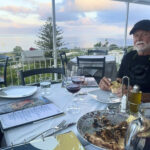 Never tiring of this view, we landed a table on the outdoor terrace at Da Luciano, where we learned that focaccia is basically naked pizza crust with olive oil. Later, we sat patiently on Gémeaux’s rooftop until midnight, waiting for Stromboli’s lava show, but saw only three small spurts of orange shooting into the sky. It wasn’t until we were underway around Stromboli’s northern tip early the next morning that the more prominent side of the crater came into view. We hoped for a better look at its frequent spews of lava but the only fiery red color we saw in the sky was the rising sun.
Never tiring of this view, we landed a table on the outdoor terrace at Da Luciano, where we learned that focaccia is basically naked pizza crust with olive oil. Later, we sat patiently on Gémeaux’s rooftop until midnight, waiting for Stromboli’s lava show, but saw only three small spurts of orange shooting into the sky. It wasn’t until we were underway around Stromboli’s northern tip early the next morning that the more prominent side of the crater came into view. We hoped for a better look at its frequent spews of lava but the only fiery red color we saw in the sky was the rising sun.
So there’s a quick snapshot of six of the seven Aeolian islands in southern Italy. Sorry we missed you Alicudi. Maybe next time…although given the current activity in the region (like erupting Mt. Etna on Sicily!), you might look a lot different in the future.

